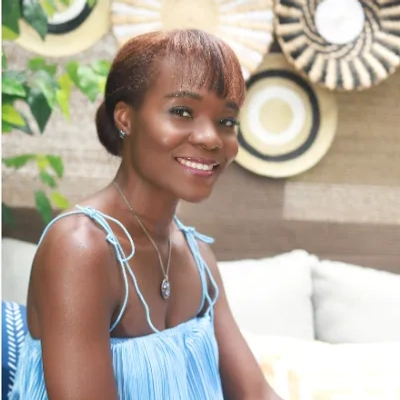10 Ways to Create a Comfortable Space for Your Eyes at Home Or Work
Creating a comfortable space for your eyes is essential for both productivity and well-being. This article presents expert-backed strategies to optimize your home or work environment for better eye health. From lighting techniques to color choices, discover practical tips that can transform your space into an eye-friendly oasis.
- Create a Serene Office with Calming Colors
- Optimize Lighting and Screen Positioning
- Install Dimmable LEDs for Task and Accent
- Reduce Glare with Honed Surfaces
- Layer Indirect Lighting to Mimic Daylight
- Organize Space and Maximize Natural Light
- Invest in an Air Purifier
- Use Blue Light Glasses and Take Breaks
- Choose Neutral Colors to Reduce Strain
- Upgrade Monitor and Reposition Light Source
Create a Serene Office with Calming Colors
In my own office, I've created a space that's not only comfortable for my eyes but also inspiring to work in every day. I started with a palette of cooler, calming colors that set a serene tone the moment I walk in. My statement wall, covered in a bold, patterned wallpaper, adds just the right amount of visual interest without feeling overwhelming. It's the backdrop behind my chair, so when I look up from my work, I get that burst of personality and texture, but the rest of the room stays in soft, solid tones so my eyes can rest and my focus stays on the task at hand.
Soft, floor-to-ceiling draperies frame the windows and instantly soften the space. They filter the natural light, reducing glare on my screen and creating a gentle, diffused glow throughout the day.
Every detail is designed to keep me both creative and organized. My worktable and shelving are arranged so that I can easily access samples, fabrics, and inspiration boards without clutter taking over. Creative tools and beautiful objects are styled in key spots close enough to spark ideas, but never so much that they compete visually with my work. The balance of intentional design and function means I can spend long hours here without feeling fatigued, both mentally and visually.
The result is an office that feels like a reflection of my style: eclectic yet refined, calming but with personality. It's a space that supports my creativity, keeps me organized, and makes the workday something I actually look forward to.

Optimize Lighting and Screen Positioning
In my work as an ophthalmologist, I'm constantly thinking about ways to reduce eye strain and support long-term eye health. And this isn't just for my patients, but also in my own environment as well.
One of the most impactful changes I've made at home and in the office is optimizing lighting and screen positioning to create a more eye-friendly workspace.
At work, I replaced overhead fluorescent lighting with softer, indirect LED lighting that reduces glare. I also make sure all screens (whether monitors or laptops) are positioned at eye level and about 20-24 inches away, which helps minimize strain on the eye muscles. It's a small shift, but it dramatically improves visual comfort, especially during long clinic or administrative days.
At home, I've also added blue light filters to all my devices and enabled dark mode where possible. This not only makes screen time easier on the eyes in the evening, but it also helps support better sleep by reducing melatonin disruption.
One final tip I practice and recommend often: the 20-20-20 rule. Every 20 minutes, look at something 20 feet away for at least 20 seconds. It's simple, but incredibly effective at reducing digital eye strain, and it's a habit I've encouraged our entire team and my family to adopt.
When it comes to protecting your vision, small environmental changes can have a lasting impact.

Install Dimmable LEDs for Task and Accent
As an interior designer, wife, and mom, one thing I've done in my own home to make it more comfortable and functional--both for the eyes and for daily living--is to use dimmable LED lights.
Task lighting is different from accent lighting, and each should be used for its specific purpose. Accent lighting is great for creating intimate moments or highlighting cozy areas, such as reading nooks or family rooms where everyone gathers. But in spaces like a library or kitchen--where you need to clearly see what you're doing--task lighting is the better choice.
For accent lighting, aim for a warmer color temperature in the 2500K range. For task or overhead lighting, look for a cooler range of 3500K to 4000K. This balance creates a space that's both comfortable and functional for your eyes, whether at home or at work.

Reduce Glare with Honed Surfaces
Reducing Eye Strain Through Smart Design
One of the most effective changes I've made to create a more comfortable and functional space for my eyes—both at home and at work—has been strategically using natural light combined with matte, low-glare surfaces. Harsh artificial lighting and glossy materials can increase eye strain over long periods.
Why Material Selection Matters
As the founder of Imperial Stone Group, I work closely with natural stone every day, sourcing premium slabs from renowned locations like the Carrara quarries in Italy. In my own workspace, I chose a honed marble desktop instead of a polished surface. The honed finish reduces reflected glare from overhead lighting and computer screens, making it gentler on the eyes during extended design work and client consultations.
Additional Comfort Adjustments
Positioning: My desk faces a window with filtered daylight, while my monitor is placed at a right angle to avoid direct glare.
Layered Lighting: Adjustable LED task lighting ensures I can fine-tune brightness levels throughout the day.
Natural Palette: Using organic textures and subtle color contrasts creates a calming environment that supports visual comfort.
These small but deliberate choices have significantly reduced visual fatigue, making my workspace more inviting and productive.

Layer Indirect Lighting to Mimic Daylight
Hello,
Switching from overhead lighting to layered, indirect lighting made the biggest difference for both eye comfort and mental clarity. I replaced harsh ceiling fluorescents in my office with adjustable sconces and task lights that mimic natural daylight. Not only did it eliminate glare, but it also dramatically reduced fatigue during long client calls and late design reviews. The dominant setup of overhead lights blasting a room evenly actually strains the eyes by creating contrast gaps. In our work with custom stone installs, we obsess over lighting direction to highlight texture. I applied the same principle to my workspace, and the result was a softer, more focused environment where both my eyes and creativity could flourish.
Best regards,
Erwin Gutenkust
CEO, Neolithic Materials
https://neolithicmaterials.com/

Organize Space and Maximize Natural Light
I've been working from home for years, both in a 9-to-5 role and while running my own online business, so creating a comfortable and functional workspace for my eyes was essential.
The biggest game-changer was compartmentalizing everything. I use desk organizers, shelves, and small containers so every item has a home. It keeps my space clean, which reduces visual clutter and helps me stay focused for long hours.
Another major factor has been natural light. My desk is positioned right by a window, which gives me consistent daylight exposure.
It not only reduces eye strain but also keeps the space feeling alive and energizing. For anyone spending long hours in front of a screen, I recommend organizing your space with intention and maximizing natural light. It makes a bigger difference than you might think.
Invest in an Air Purifier
I'm someone with pretty sensitive eyes that can get very dry and painful if they're exposed to lots of dust or particles in the air. One thing that made a huge difference both at home and in the workplace was investing in a good-quality air purifier. Having the air be free of dust, smoke, etc., has made a huge difference in my comfort and ability to function, and I've had good success even using smaller portable "desk" models at work.

Use Blue Light Glasses and Take Breaks
One thing I've done to make my space easier on the eyes—both at home and at work—is to start using blue light glasses during screen-heavy hours. I didn't think they'd make much of a difference at first, but after a few weeks, I noticed less strain and fewer headaches by the end of the day. Along with that, I set a timer to take short breaks every hour. Just stepping away from the screen, stretching, or looking out the window for a few minutes helps reset my focus and keeps my eyes from feeling worn out. These two changes have made a real difference in how I feel by the end of the day.

Choose Neutral Colors to Reduce Strain
One thing I've done at home, specifically with my home office, is to choose colors in the room with an eye toward reducing eye strain throughout the day. I found that looking at a bright screen while having a darker wall color behind it was actually causing me a bit more strain than usual, so I opted for something a bit more neutral, and that has helped a lot. For similar reasons, I've also found it important to make sure I have plenty of natural or artificial light in the room to prevent myself from staring at a bright screen in a dark room, which also tends to strain my eyes.
Upgrade Monitor and Reposition Light Source
I changed my workspace a few months ago, and I got a bigger monitor and changed the position of my light. I used to have a smaller screen, and I was straining a lot or moving too close to the screen, which wasn't good for my eyes. My lights were also on the part of the ceiling behind my screen, and the direct reflection didn't help me. I've changed the position, moving it backwards where it isn't in my line of vision, and I'm enjoying my new workspace.




